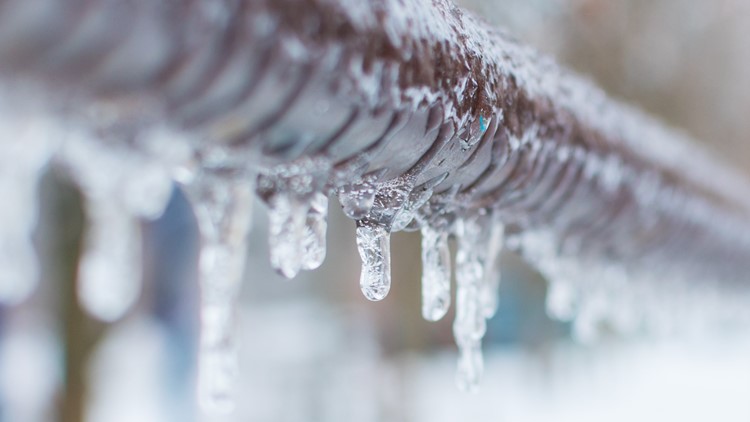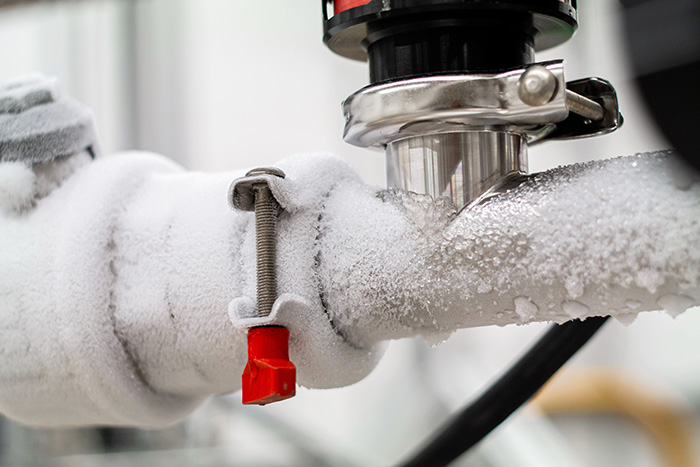Just how do you actually feel when it comes to Winter Plumbing Precautions: Preventing Frozen Pipes?

Winter can wreak havoc on your plumbing, especially by freezing pipes. Below's how to stop it from occurring and what to do if it does.
Introduction
As temperatures decrease, the danger of frozen pipes boosts, possibly leading to expensive fixings and water damages. Comprehending how to avoid frozen pipes is crucial for house owners in chilly environments.
Avoidance Tips
Insulating at risk pipes
Wrap pipes in insulation sleeves or use warm tape to protect them from freezing temperature levels. Concentrate on pipelines in unheated or exterior locations of the home.
Heating strategies
Keep interior rooms properly heated, particularly areas with pipes. Open closet doors to allow cozy air to distribute around pipelines under sinks.
Exactly how to identify icy pipes
Search for lowered water flow from faucets, unusual odors or sounds from pipelines, and visible frost on subjected pipelines.
Long-Term Solutions
Architectural modifications
Consider rerouting pipes away from outside wall surfaces or unheated locations. Include extra insulation to attic rooms, basements, and crawl spaces.
Updating insulation
Invest in high-grade insulation for pipelines, attic rooms, and walls. Proper insulation aids maintain constant temperature levels and lowers the risk of icy pipes.
Safeguarding Outside Pipes
Garden hose pipes and outside taps
Separate and drain pipes garden tubes prior to winter. Install frost-proof spigots or cover outside faucets with insulated caps.
Understanding Frozen Pipes
What creates pipelines to ice up?
Pipelines ice up when subjected to temperatures below 32 ° F (0 ° C) for extended durations. As water inside the pipes freezes, it broadens, putting pressure on the pipe walls and potentially triggering them to burst.
Risks and damages
Icy pipes can lead to water supply disturbances, home damage, and pricey repair work. Ruptured pipelines can flooding homes and trigger considerable structural damages.
Signs of Frozen Pipes
Recognizing icy pipelines early can prevent them from breaking.
What to Do If Your Pipes Freeze
Immediate activities to take
If you suspect icy pipes, maintain taps open to relieve stress as the ice thaws. Use a hairdryer or towels soaked in hot water to thaw pipes slowly.
Verdict
Preventing icy pipelines calls for aggressive actions and fast feedbacks. By recognizing the reasons, indications, and preventive measures, home owners can shield their plumbing during cold weather.
5 Ways to Prevent Frozen Pipes
Drain Outdoor Faucets and Disconnect Hoses
First, close the shut-off valve that controls the flow of water in the pipe to your outdoor faucet. Then, head outside to disconnect and drain your hose and open the outdoor faucet to allow the water to completely drain out of the line. Turn off the faucet when done. Finally, head back to the shut-off valve and drain the remaining water inside the pipe into a bucket or container. Additionally, if you have a home irrigation system, you should consider hiring an expert to clear the system of water each year.
Insulate Pipes
One of the best and most cost-effective methods for preventing frozen water pipes is to wrap your pipes with insulation. This is especially important for areas in your home that aren’t exposed to heat, such as an attic. We suggest using foam sleeves, which can typically be found at your local hardware store.
Keep Heat Running at 65
Your pipes are located inside your walls, and the temperature there is much colder than the rest of the house. To prevent your pipes from freezing, The Insurance Information Institute suggests that you keep your home heated to at least 65 degrees, even when traveling. You may want to invest in smart devices that can keep an eye on the temperature in your home while you’re away.
Leave Water Dripping
Moving water — even a small trickle — can prevent ice from forming inside your pipes. When freezing temps are imminent, start a drip of water from all faucets that serve exposed pipes. Leaving a few faucets running will also help relieve pressure inside the pipes and help prevent a rupture if the water inside freezes.
Open Cupboard Doors
Warm your kitchen and bathroom pipes by opening cupboards and vanities. You should also leave your interior doors ajar to help warm air circulate evenly throughout your home.

Do you really like reading up on Preventing and dealing with frozen pipes? Make feedback down below. We'd be delighted to see your ideas about this article. Hoping that you come back again soon. Enjoyed reading our review? Please quickly share it. Help someone else discover it. Thank you so much for going through it.
Click Here